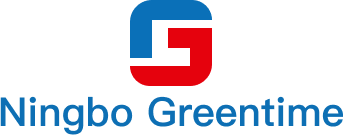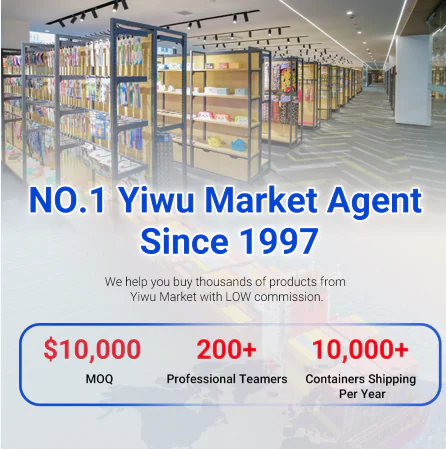
1. What Does FOB Mean in Shipping Terms?
FOB stands for Free on Board. It is one of the oldest and most widely used Incoterms in global trade. Buyers and sellers choose FOB when they want a clear division of responsibilities at the port of shipment.
Under FOB, the seller delivers the goods onto the vessel that has been nominated by the buyer. The loading point is critical. Once the goods are safely placed on board, the risk of loss or damage immediately shifts from the seller to the buyer. From this moment, the buyer takes full responsibility for the cargo.
Key points to remember:
- Seller obligations: The seller prepares the goods, arranges inland transport to the port, clears the goods through export customs, and ensures the cargo is loaded onto the vessel.
- Risk transfer: As soon as the goods cross the ship’s rail, risk and liability move from seller to buyer.
- Buyer obligations: The buyer covers ocean freight, insurance, unloading at the destination port, import duties, and inland delivery.
FOB is suitable only for sea freight and inland waterway transport. It cannot be used for air shipments, courier parcels, or multimodal transport.
In practice, FOB is especially common in China trade, because it gives overseas buyers more control over shipping arrangements and helps avoid inflated freight charges from suppliers.
2. What Are the Seller’s Responsibilities?
Under FOB, the seller must:
- Produce and package the goods.
- Provide commercial invoice and packing list.
- Arrange transport to the port of shipment.
- Clear customs for export.
- Load the goods onto the buyer’s vessel.
- Provide proof of delivery on board, usually via Bill of Lading.
The seller does not arrange international freight or insurance. Once goods are on the ship, responsibility ends.
3. Advantages of Shipping FOB for the Buyer
Why many buyers prefer FOB:
- Control over freight: Buyers choose their own shipping line, schedule, and forwarder.
- Better cost management: Buyers can negotiate freight rates directly.
- Transparency: No hidden markups from the seller on shipping charges.
- Flexibility: Buyers control routing, transit times, and delivery terms.
- Direct communication: Buyers work directly with carriers, reducing delays.
4. Disadvantages of Shipping FOB for the Buyer
FOB is not perfect. There are risks:
- Risk starts early: The buyer bears risk once goods are on the ship.
- Insurance required: Buyer must purchase cargo insurance to avoid losses.
- Responsibility for freight issues: Delays, damage, or missing documents become buyer’s problem.
- More coordination needed: Buyer manages communication between forwarder, carrier, and seller.
5. When to Use an FOB Agreement
- FOB works best in certain trade conditions:
- Large or regular shipments by sea.
- Buyers who already work with freight forwarders.
- When buyers want to control freight costs.
- For experienced importers who understand customs and logistics.
FOB is not ideal for:
- Small buyers unfamiliar with shipping.
- Air shipments or courier orders.
- Situations where seller has better freight rates than the buyer.
6. China FOB – Standard Rates and Timeframes
FOB from China is common in global trade. Buyers worldwide choose FOB because of cost transparency.
- Typical costs in China under FOB
- Export clearance: Paid by seller.
- Trucking to port: Paid by seller.
- Loading charges: Paid by seller.
- Ocean freight: Paid by buyer.
- Insurance: Paid by buyer.
7. How Does Shipping Under FOB Work in China?
Step-by-step process:
- Buyer and seller agree on FOB terms in contract.
- Seller prepares goods and arranges inland transport to port.
- Seller clears customs in China.
- Seller loads cargo on buyer’s nominated vessel.
- Carrier issues Bill of Lading as proof of shipment.
- Risk transfers to buyer once cargo is on board.
- Buyer arranges freight and insurance to final destination.
- Buyer clears customs on arrival and handles inland delivery.
This structure makes responsibilities clear and avoids disputes.
8. FOB FAQs
Q1: Is FOB the same as CIF?
No. FOB (Free on Board) and CIF (Cost, Insurance and Freight) are very different. Under CIF, the seller not only delivers the goods on board but also arranges and pays for ocean freight and provides minimum cargo insurance. This gives the buyer less control but more convenience. Under FOB, the seller’s job ends once the cargo is on the vessel. The buyer must take care of freight, insurance, and all destination charges. Many experienced buyers prefer FOB because it avoids hidden shipping markups that may occur under CIF.
Q2: Can FOB be used for air shipments?
No. FOB is designed only for sea freight and inland waterway transport. If the cargo is shipped by air, courier, or rail, other Incoterms should be used, such as FCA (Free Carrier). Trying to apply FOB to air shipments can create confusion and legal risks, because the point of delivery and transfer of risk is not clearly defined outside seaports.
Q3: Who arranges insurance under FOB?
Under FOB, the buyer arranges insurance. The seller has no obligation to cover the goods once they are loaded onto the ship. Buyers often purchase marine cargo insurance to protect against damage, theft, or loss during the voyage. Insurance is highly recommended, especially for long routes such as China–US or China–Europe trade lanes, where risks of delay, rough seas, or container loss exist.
Q4: What documents does the seller provide under FOB?
The seller must hand over a complete set of export and shipping documents so the buyer can claim the goods at destination. These usually include:
Commercial invoice – proof of sale and value of the goods.
Packing list – details of the cargo, dimensions, and weight.
Export customs documents – proof that the goods were legally cleared for export.
Bill of Lading (on board) – issued by the carrier after loading, serving as a receipt and evidence of shipment.
These documents are essential for customs clearance at both origin and destination. Without them, the buyer may face delays or fines.
Q5: Why is FOB popular in China trade?
FOB is extremely common in China because it provides transparency and cost control for international buyers. Chinese suppliers often quote very competitive FOB prices, which include only inland transport and export costs within China. Buyers then choose their own freight forwarders and shipping lines, allowing them to:
Compare freight rates directly.
Select the most reliable or fastest carriers.
Avoid hidden margins charged by some suppliers under CIF.
Keep flexibility in delivery schedules and routing.
For these reasons, FOB remains the default Incoterm in many s
Conclusion
FOB Incoterms remain one of the most widely used shipping terms in global trade.
Buyers get cost transparency and control, while sellers limit responsibilities to the port of shipment.
However, FOB also shifts risks to the buyer once cargo is loaded. Importers must balance control with responsibility.
For buyers working with Chinese suppliers, FOB provides a clear, efficient, and cost-effective way to manage large shipments.
If you want to know the details of other incoterms, you can visit Incoterms Guide [Updated 2025] With Chart.

Tennie Chen is responsible for sourcing and supplier evaluation, with a focus on balancing product quality, cost efficiency, and supply chain reliability. My role involves identifying trustworthy manufacturers, comparing quotations, analyzing total landed costs, and ensuring compliance with international standards. I always prioritize long-term partnerships over one-time deals, aiming to work with suppliers who can provide consistent quality, competitive pricing, and flexible solutions. When making purchasing decisions, I evaluate not only the product itself but also the supplier’s production capacity, lead time, and after-sales support, ensuring that every cooperation contributes to sustainable business growth.










